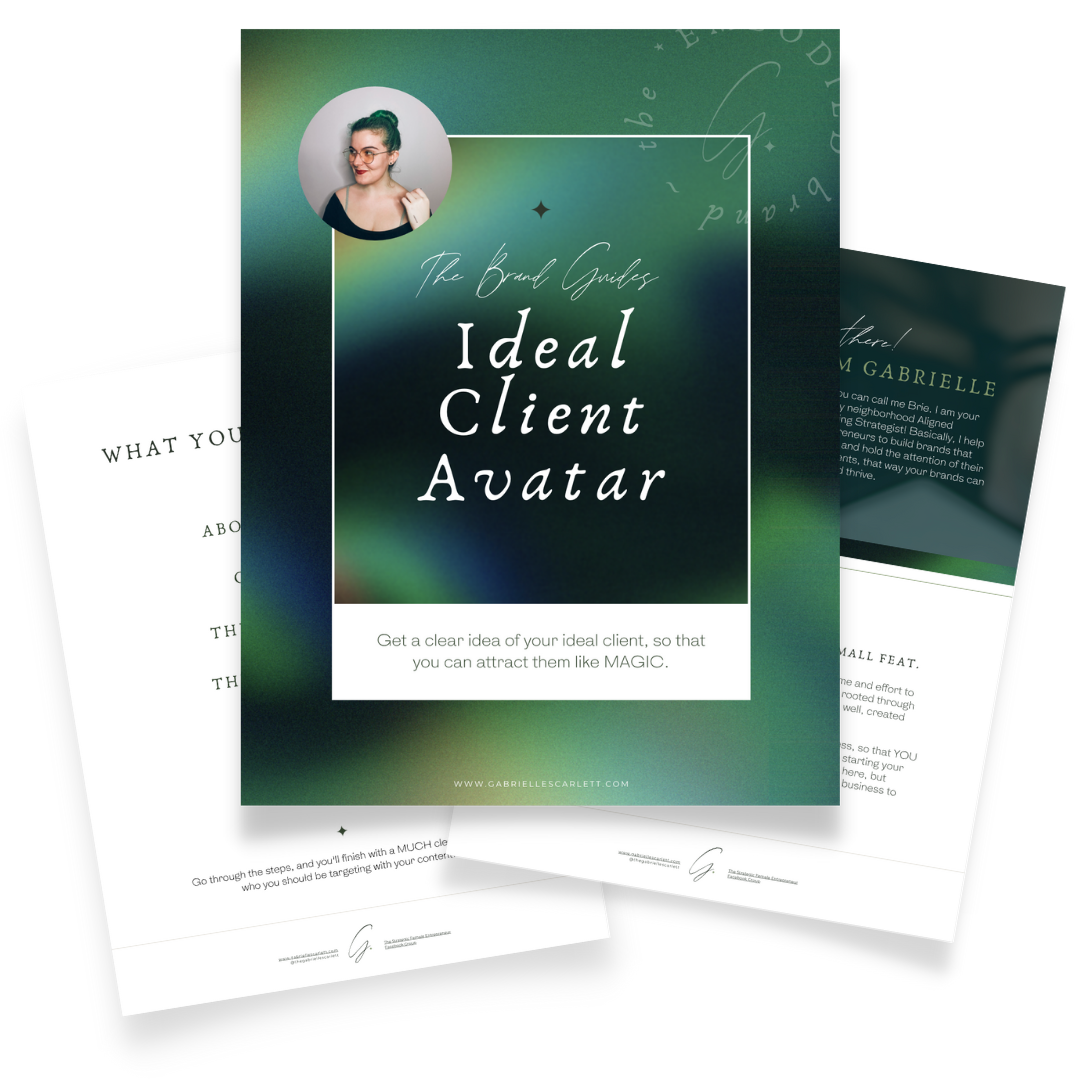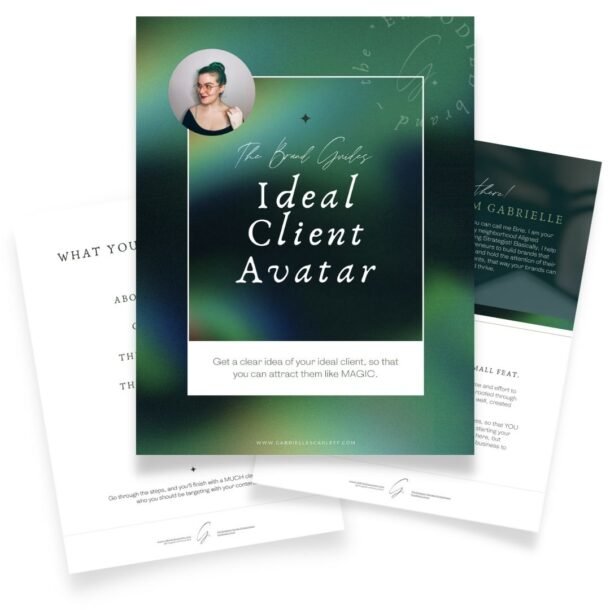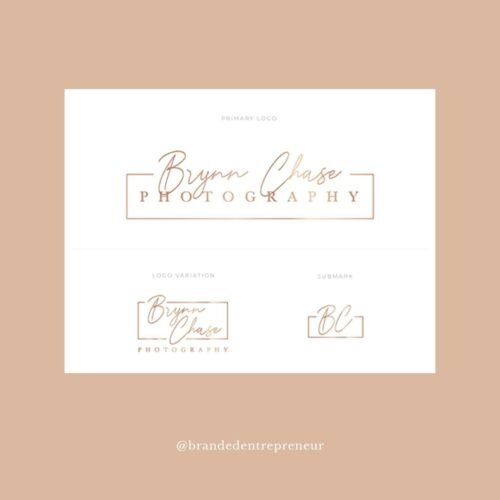
✦ Responding to Price Shoppers as a Creative ✦
I want to preface this by saying three things. First, there is nothing wrong with price shopping. I mean, I personally price shop, for certain things. It’s a regular occurrence for my fiancé and I to make a little miniature implied competition out of finding the best deals on things we’re planning to order online, or grabbing the best coupons for our takeaway.
There is *nothing* wrong with price shopping. But… we as creatives need to be strategic in our responses to these potential clients such that we don’t unintentionally undervalue our work, or our industry as a whole – and sometimes that feels a little like rocket science.
Second, this conversation applies to more than just creatives, but for the purpose of this specific post I’m going to focus on creative service providers and product creators, because this is an area where I find lots of questions about the value of what you do. So if you’re an artist of any kind, or a designer, or a web professional, or a seamstress, or a photographer, or a sculptor, or literally any kind of creative professional, these are tactics that can be used in your own processes.
And finally, aligning your brand to the needs of your ideal clients is one of the MANY ways that you can avoid encountering price shoppers in the first place. Because your ideal clients… very likely are willing to pay your prices for your work whether up front, or through a payment plan. (That’s part of what makes them ideal.)
Now with the caveats out of the way – let’s get into it!
Who am I talking about?
Honestly if you’re a creative professional, I would bet my hard earned money that if you’re not encountering these potential clients now, you have in the past.
Here’s what this kind of thing looks like:
Client: OMG I love your work! I’m in the asking around stage, trying to find a photographer for my daughter’s first birthday. What do you charge for events?
You: First of all, thank you so much! I really appreciate it. A lot of love goes into all of my work! As for an event, I charge hourly, at $XXX/hour. How long will the event itself be?
Client: Woah. That’s definitely more than I was expecting. Do people pay that just for some photos?
*end scene*
So….. who can relate? Anyone? Everyone?
Yeah. The price shopper formula is usually: compliment work, ask for pricing, subsequently undermine work’s value, and express shock (the “denial” stage). Then when you respond, they have a tendency to go into what I call the “bargaining” stage, which looks a little like this.
Client: “What if we just wanted a couple of family portraits and some candids while we’re opening presents?”
Which roughly translates to: “what if you did everything you were already going to do, but cheaper?”
It’s these conversations that we’re talking about, because responding in these situations can feel hella awkward turtle. You’re put in a position where it feels as if you need to justify your work, your pricing, and the value of your time – to someone who has essentially already made it clear that they don’t see that same value despite telling you that they love your work. Yikes, on all of the respective bikes.
What NOT to do
Before we cover what we want to do in these situations, let’s talk about what NOT to do.
1. Do not apologize for your prices.
Your pricing is your pricing is your pricing is your pricing. Hopefully, it’s based on a combination of your CODB, relevant taxes, your local market, and your expertise. But at the end of the day – you set those prices for a reason. You have NOTHING to be sorry for. Being out of someone’s budget is not a fault of yours that needs to be remedied.
2. Do not compromise your pricing.
I could write an entire post about this one just on its own (maybe I will, honestly) – but compromising on your price is definitely not the right step. There are, of course, minor exceptions to this rule – for example, donating your time to a local non-profit to support a cause you believe in. That, however, is not the same as compromising every time someone says “that’s out of my budget.” You set your prices the way that they are for a reason (see point 1) and you are not only doing a disservice to yourself, your expertise, and your industry when you compromise pricing, but you’re also undervaluing your time. And your time is literally your most valuable resource. If you set this precedent, I guarantee you there will suddenly, as if by magic, be another five people in your DMs like “hey so I heard you gave *insert name here* a deal”…. And on the surface, that sounds nice. Five more clients, right? But…. That’s five clients who are starting that business relationship with you expecting you to give them a deal. I return to point 1: you set your prices the way they are set for a reason. Now you’re in the position of working for less than your work is worth, and instead of it being for one person…… it’s for more.
3. Do not be rude to the price shopper.
This might seem like a given, and I know I talk a lot about how being professional doesn’t necessarily mean following conventional communication rules within your business (I mean, if you’ve worked with me, you KNOW I’m casual as hell) – but… this does not extend to being rude. We can sometimes be pulled to a knee-jerk reaction when someone says something that clearly underestimates our work. We can take that as a judgment on ourselves. But this is something that we’re MAKING that interaction mean about ourselves – we’re assigning meaning, where it doesn’t necessarily exist. Even if someone comes across a bit curt about your pricing, I promise it’s more effective in the long run and will save you a lot of stress (and potentially a PR nightmare, you’re W E L C O M E) if you’re abundantly kind in your responses, no matter what our emotional lizard-brain wants to do in the situation.
4. Do not freak out that you might miss working with this client.
Saying no is hard. I get it. Saying no to a potential client is even harder – because ya know, this creative work is how we pay our bills. And we like being able to pay those bills.
However: the cons outweigh the pros here. The detrimental impact of compromising on your pricing outweighs the potential positive impact of income from undervalued projects. If this compromise becomes a regular thing for you, the stress resulting from working for so much less than what covers your baseline needs, will burn you out SO FAST on work that isn’t supposed to feel like work.
Let your creative work continue feeling fun. Please. I beg you.
Responding to the Price Shoppers
So if we’re not giving in, we’re not apologising, we’re not being rude, and we’re not freaking out… what *are* we doing in response to price shoppers?
There are tons of options, and I’m going to break down some of my favourites.
1. Educate
This tactic has a tendency to get some hate, because, after all, we’re not obligated to explain our pricing to anyone. However, there are situations where it’s helpful to actually explain a bit of why certain products or services are priced the way they are, because there may legitimately be a misunderstanding about the work involved. Usually I gauge this within the lead up conversation I’ve had, and if I feel like there’s some information I could provide for clarity, I pop in with it, gently. Again, we’re being careful to not come across rude, because that’s the opposite of what we’re going for. The “Educate” tactic is one that I go for if, for example, the project is something I actually genuinely want to do, but the client is wondering why my quote is so much higher than the competition they also reached out to. I almost always follow the education content with one of the other tactics I’m about to go over. In this example, I’ll follow it with “Payment Plans.”
Educating can look a little like this:
Client: So I’ve asked around and this quote is really high compared to the others I got. Can you work with my budget?
Me: It’s definitely an investment – I completely understand! Projects like yours require a significant amount of 1:1 time from me in development, feedback stages, and implementation. To be able to give the attention to my projects that they deserve, I have minimums that I do have to adhere to financially. I do offer payment plans for those who want to spread their investment out a bit! If you want, we can talk about what those options look like?
You could also go with something more along the lines of:
Me: I completely understand where you’re coming from! However, my pricing has been specifically designed to reflect my time, expertise, and cost of doing business. When we work together, you’re working with someone who has nearly ten years experience in the industry, is licensed and insured, and actively attends further education to grow as a *whatever-the-fuck-you-are*. Pricing my services this way allows me to provide a truly luxury experience for you *or whoever*. I do offer payment plans, if you want to be able to spread out the investment! Is that something you’d be interested in?
You take a moment to comment, saying hey, I get where you’re coming from. Then, you explain why there is more to what they’re asking for than meets the eye. After that…. You can present another one of these tactics, helping to make sure that they’re given an option after you’ve told them what’s-what (nicely.)
Now, if you’re not in the mood to educate, or it doesn’t feel like the right path – or… you’re straight up getting non-ideal-client vibes from this inquiry… there are a ton of other options for you!
2. Payment Plans
I want to start this off by saying that you are in no way obligated to offer payment plans. It doesn’t matter how much you charge. It’s not required. You can charge $15k+ for services, and not offer payment plans. If your ideal audience has the funds and interest in your offer, and your brand is targeting them properly, you will still get clients, I guarantee you. However, that’s not the situation of everyone’s ideal client, and if your ideal client isn’t in a position to pay the investment for your services up front (which contrary to popular belief DOES NOT necessarily mean that they’re not your ideal client, yes, this is a hill I will die on) then it would behoove you to offer payment plans.
Which means that when you encounter people who ask the “can you work with my budget” question…. You have a natural counter offer!
Them: So… this is kind of out of my budget, but I do want to work with you. Is there wiggle room?
You: There isn’t any alternate pricing available, however, we could totally look at setting you up with a payment plan! Do you want to talk about what that would look like?
If you’re super on it, you can even present the options they have right there. Do you let them spread it out over six months? Three? 50/50 payment? Let them know, so that they have that to think about before they respond.
3. Refer them to another Pro
This is one of my favourites, because you get to refer to your network of badass people doing badass things. Just like when someone is asking for something outside of your service/product set, and you refer them to someone you know who does what they’re looking for, you can point someone for whom you are out of budget to another professional who might have packages that meet their needs more closely.
Now, I have to give this one with the caveat that this is not an opportunity to farm off clients who are truly undervaluing an entire industry, to professionals who are undercutting their local market. Not cool, we don’t play that game. In that case, I prefer using option 2, or option 5, which is coming up. But anyway, the “Refer Them” tactic looks a little like this:
Them: This is way more expensive than I anticipated – I’d only set aside $XXX for this. Do you have any discounts I can use?
You: I don’t offer any discounts, no. However, I know that *professional’s name* does projects in a similar style to what you’re looking for, and her/his/their packages would meet your budget! I’d definitely recommend reaching out to him/them/her to see whether he/she/they have/has availability.
Sometimes, I’ll even list a couple of professionals people can reach out to, so that they can compare style to see who’s work they like better.
4. Remind them that you’re keeping things fair.
You have other clients. Those other clients have paid your fees. In full. The whole price. Which means that making exceptions to your pricing structure for someone who’s asked nicely (or not-so-nicely, which is sometimes the case) both undermines your business structures, and is unfair to your previous, current, and future clients. It’s fine to offer discounts, when that’s a part of your business plan. I personally offer a 10% discount for those who choose to pay in full for their package at the time of signing. I also have a couple of discount tiers for those choosing to extend their projects following completion – but those are available to EVERYONE, equally.
This usually isn’t a step-one tactic, but I do pull it out every once and a while if someone pushes back against me when I’m firm on pricing. It can look a bit like this:
Them: Wow – that’s way more than I expected. *Other professional* quoted me *low-low price*. Could you price match theirs?
You: To be fair to my other clients, my prices for *insert your cool shit here* aren’t negotiable.
I’ll tend to follow this one up with information about payment plans. If you didn’t notice, payment plans are like, the GO-TO nip-it-in-the-bud price shopper conversation re-router.
Which brings us to:
5. Just say no, boo.
I say no a lot. It’s like, my favourite sentence. I’m like a toddler who just learned to say it, honestly. (Partially because I did indeed JUST learn how to use “no” strategically, after stretches of my life where I literally said yes to everything constantly.)
I’ve listed this last, because it’s basically the most difficult of the options here. Saying “no” is fucking hard, especially if you’re naturally a people-pleaser (hello, hey, hi, yes, this is me.) And on top of that, it can be complex to try to say “no” without sounding cold, or accidentally alienating a potential future client. So how do you say no without sounding (or feeling) like an asshole?
TONS OF WAYS. I do want to give another caveat here, because this space is for women, and I in no way want to participate in the overarching bullshit that says being straightforward as a woman makes us bossy bitches. You are not obligated to soften your tone to make people feel more comfortable, if you don’t want to. If that isn’t your style, literally just say “no” and that’s that. It is a full. Sentence. However I also want to note that if you’re of that mind to begin with… I doubt you’d be reading my content on “How to respond to price shoppers as a creative.” Because…. You’ve got this shit under wraps already.
So when it comes to the “Just say no” tactic, we start with simple, short, and straightforward:
You: I don’t offer any discounts, no.
You: There isn’t any room for negotiation on my package prices.
Note that those responses are “closed” – meaning, they don’t give an easy means of the inquirer to continue the conversation. Then we go on to slightly softer, but still closed responses, like:
You: Thank you so much for your interest, however I don’t think we’d be the best fit. I wish you well in finding another pro to work with!
You: Thank you so much for your interest, however I won’t be able to accommodate your budget.
You: At this time I don’t have any commission options that fit those financial constraints, but I wish you all the best in finding someone who meets your needs!
So those three all can be modified for your specific niche and work, (and tone, since I use lots of words sometimes, oops) but they’re all softer – less blunt. They all also have a closed ending, not leaving things open ended for them to ask you more questions about bringing your prices down.
We can say no with an open end though, leaving things open to potential future work when their budget changes. This isn’t even always just a response for price shoppers – sometimes it’s a response for true ideal clients, who completely understand the value of your work, want to pay you what you’re asking, but don’t have the funds at their disposal to do so at that point. This is actually the most common scenario of using these kind of responses for me. It’s less of a hard “no” and more of a “when your financial situation can support us working together let’s fucking goooooo.”
It looks a little bit like this:
You: If now isn’t the time, now isn’t the time! I completely understand that this is an investment, and it’s something that I want you to be fully prepared for before taking the leap. There’s no pressure from my end, and I’ll be here when the time is right for you.
Or, shorter…
You: I get it, it’s totally an investment! Don’t worry though, I’ll still be here if your budget changes in the future.
You can also follow this with the “Payment Plan” tactic, like so –
You: I totally get it – it’s super important to me that you feel comfortable with your investment in beautifying your home (or *insert industry here*). If that means now isn’t the time, then there are absolutely no hard feelings! If it would help at all, we could talk about payment plans that can spread out the cost for you?
And there you have it!
These are my absolute favourite ways to respond to price shoppers as a professional creative. It’s significantly more art than it is science – but hopefully these descriptions add tools to your toolbox for streamlining those more… awkward… client conversations! Remember that not all price shoppers are out to undermine the value of your work, sometimes they just need to know why. And in yet other situations… the best scenario is walking away… gracefully.
Pin me for later!
















0 Comments